17 Core exercises for triathletes
We propose some isometric exercises, adapted to start from the lowest level and be able to progress to the final position
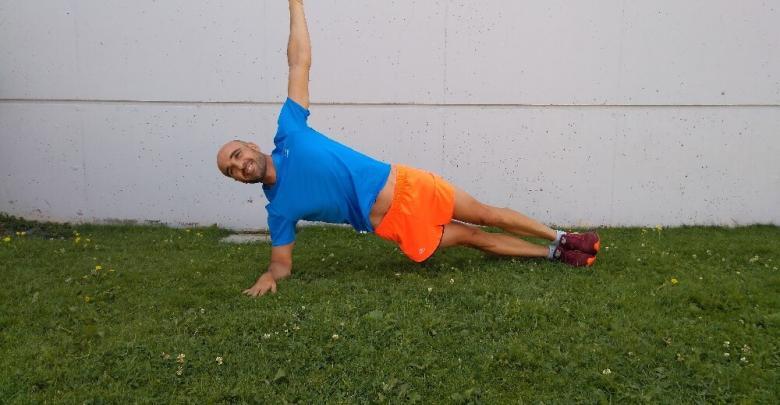
I'm sure you've heard about the importance of the Core work for triathlon performance, but you may not know how to get down to work. Keep reading to know the basic exercises to get started in strengthening the core.
Our proposal is based on isometric exercises, adapted to start from the lowest level and be able to progress to the final position. Before we start, we give you four basic tips for the correct execution:
- Begin holding each exercise until you see that you can not maintain the technique of execution correctly, that is to say, do not endure at the expense of compensatory positions due to fatigue.
- More is not better. A Intermediate duration of 30 up to 45 seconds It will be enough. When you have achieved this, new challenges will come with less support, movement or unstable surfaces.
- Activate transverse and the pelvic floor. To do this, perform a movement similar to when you can not comfortably close a trouser (active transverse) while simulating a containment and elevation of sphincters (activation of pelvic floor).
- Lends a lot attention to your lumbar curvature to avoid a "collapse" of it that causes all the tension to fall on that area.
Briefly, remember the basic guidelines for performing these types of exercises:
- Do not do more repetitions or try to hold If you can not keep the technique of execution correctly.
- Start from Progressive form in the number of repetitions or repetition time.
- Activates the transverse and the pelvic floor. To do this, perform a movement similar to when you can not comfortably close a trouser (active transverse) while simulating a containment and elevation of sphincters (activation of pelvic floor).
- Prevent your lumbar curvature from arching so that the tension does not fall in that area.
Do each exercise once and repeat everything until you achieve the whole circuit 4 times. We present you the adapted modality of lower level for each exercise, so you can start with the adapted version and progress to the end:
Front iron.
![]()
Support your forearms with a width similar to your shoulders, keeping the elbow aligned with the shoulders. Support the tip of the feet keeping the legs together. Keep your eyes on the floor with the neck in extension of the spine. Initiation variant: supports the knees.
Side plate.
![]()
Support one of your forearms with the elbow aligned with the vertical of the shoulder. It supports the external lateral of one foot placing the other one on this one. Elevate your hip while maintaining a diagonal from your head to your feet. Stretch your free arm towards the ceiling. Initiation variant: supports one or both knees
Inverted plate.
![]()
Face up, support your hands on the vertical of the shoulders, with the fingers forward or outwards. Support the back of the heels and raise the hips to form a diagonal from the chest to the feet. Initiation variant: supports the sole of the feet.
Superman.
![]()
In quadruped, support hands and knees forming a right angle with the shoulders and hips, respectively. Stretch opposite leg and arm and hold the posture without arching the lower back. Initiation variant: starts with a minimum elevation and progresses to horizontal
Front iron with hands.
![]()
Rest your hands on the floor with a width similar to your shoulders, in line with the shoulders. Support the tip of the feet keeping the legs together. Keep your eyes on the floor with the neck in extension of the spine. Initiation variant: supports the knees.
Front plate with change of supports.
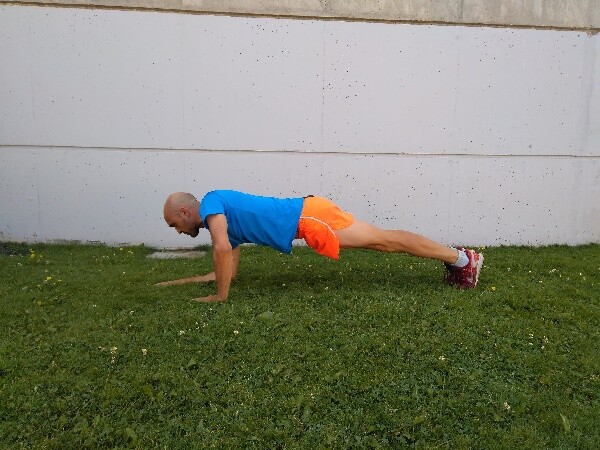
In the front iron position, alternate the position of your feet by opening and closing them. You can do it one by one (easier) or simultaneously with a small jump (more difficult).
Side plate with elevation and rotation.
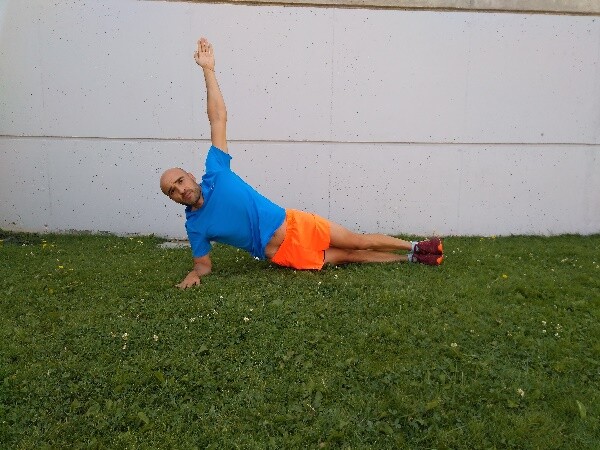
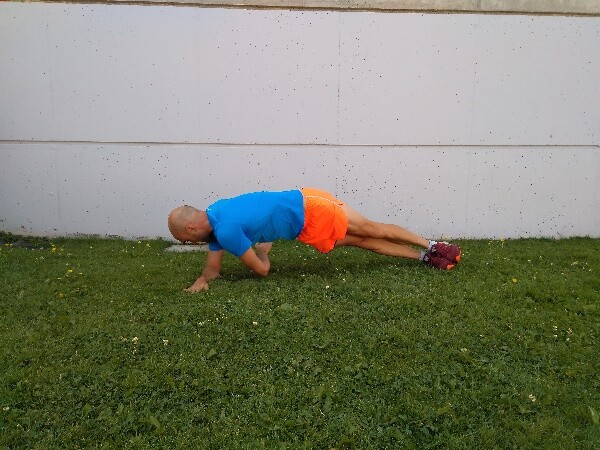
In the side plate position, with the free arm extended toward the ceiling, perform a hip lowering and elevation and then a forward rotation crossing the free arm below the chest.
Inverted iron with leg lift.
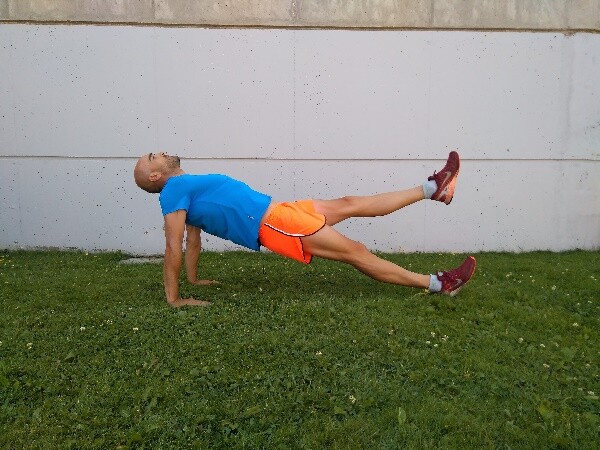
Place yourself in an inverted iron position with your hips raised and, alternatively, raise one leg fully extended up to your hip height.
Background + side plate.
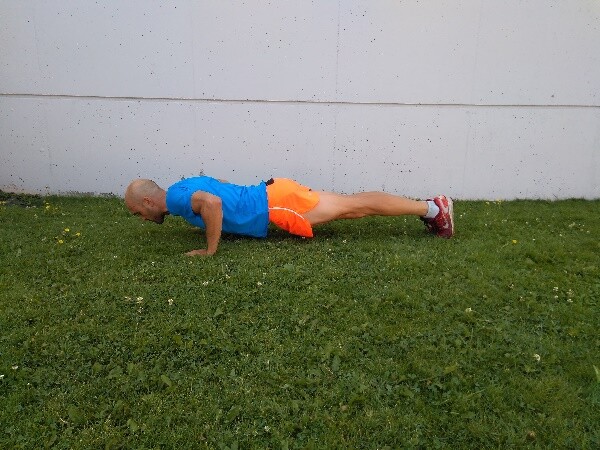
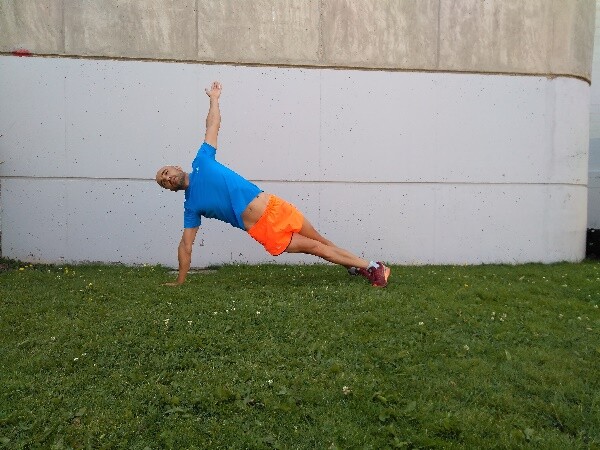
Make a flexion of arms and when the extension turns to one side to place you in position side plate supporting a hand. Make another flex with both arms and turn to the other side.
Inverted iron with two supports.
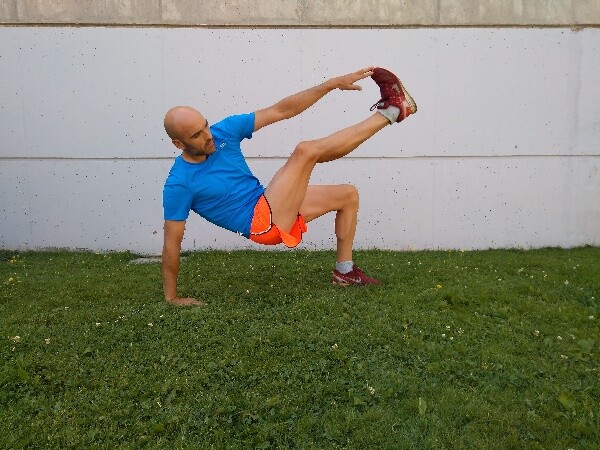
In reverse plate position, support the sole of the feet with the knees bent in 90o and the hips elevated. Alternatively, extend and raise one leg at the same time you try to touch your foot with the opposite hand.
Superman pro.
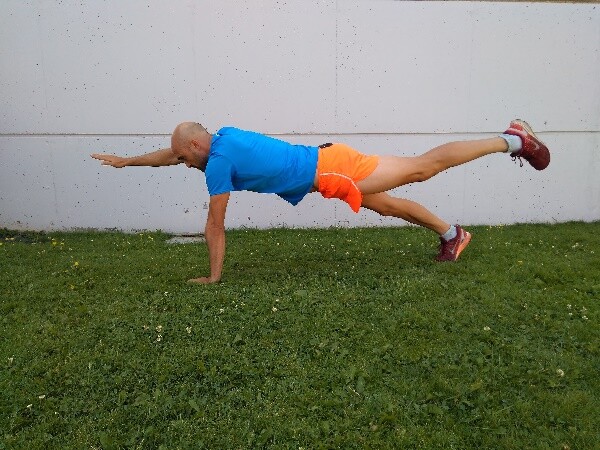
Support your hands in the vertical of the shoulders and the tips of the feet keeping the legs together. Stretch the opposite leg and arm and hold the pose for about 5 seconds. Change sides.
Front plate with support in fitball.

Rest the forearms on the fitball and maintain the position of the iron with the abdomen active and without lowering the hip.
Pyramid.


Rest your hands on the ground, below the vertical of your shoulders, and place your legs and feet on the fitball. Elevate your hips while you carry the ball to your hands to form a pyramid with straight legs and back.
Inverted iron with one leg.

Rest the arms on the floor, on the sides of the body and slightly separated from it. Place your feet on the fitball and raise the hips. Without lowering the hip, alternate the support of each foot.
Cross with spin.


Stand on your knees on the fitball, keeping your back straight and your arms crossed. Perform controlled turns on each side without lowering the arms.
Front plate with 3 supports.

Rest your hands on the ground, below the vertical of your shoulders, and place your legs and feet on the fitball. Keep your hips elevated and alternate the support of each foot.
Inverted plate with leg flexion.


Rest your forearms on the floor, under the vertical of the shoulders, and the legs and feet on the fitball. Elevate your hips and without losing that position, take the fitball to the gluteus and stretch your legs again.
The ideal progression is to start with few repetitions (6-8) of each exercise or keeping it for a short time (15-20 seconds), according to the exercise. According to masters the exercise increases the number of repetitions and exercise time. Complete the entire circuit between 3 and 4 times at least 2 days a week.
There are no previous results.




























